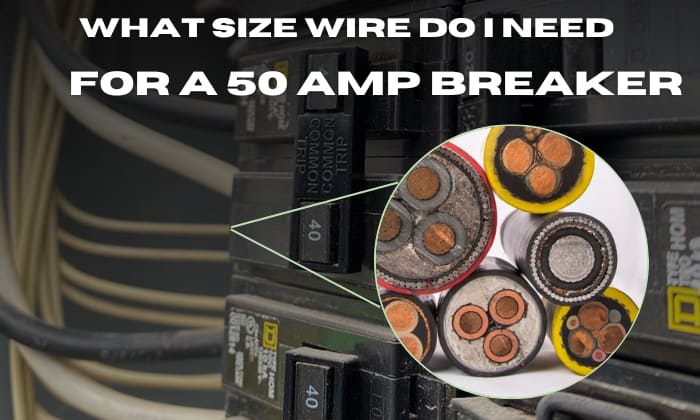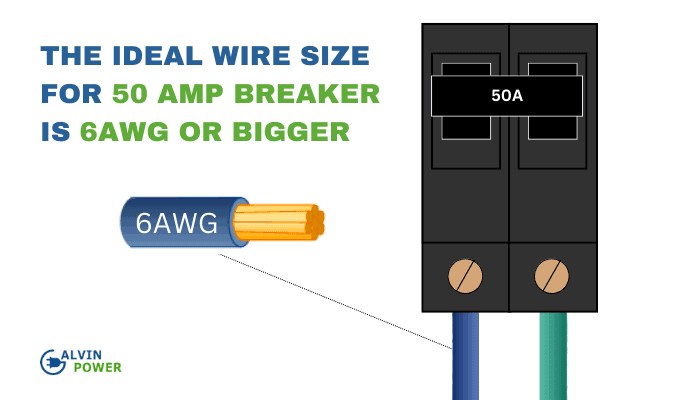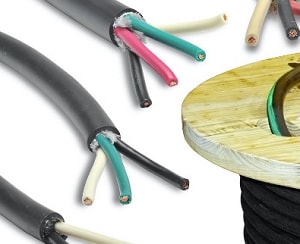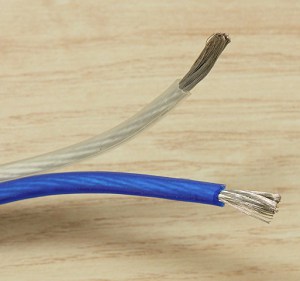Precise wire sizing for a specific breaker rating is required when designing a circuit. In this manner, you can avoid overheating the wire, which can lead to more severe electrical problems.
Then, what size wire do I need for a 50 amp breaker? A 6-gauge wire (0.162 inches in diameter) or bigger is the answer. However, if you’re wondering how we got at this figure, read the details below.
Table of Contents
What is the Recommended Gauge Wire for 50 Amp Breaker?
Generally, an NEC (National Electrical Code) wire size chart will help determine each circuit’s recommended wire size. It contains a list of different wire sizes, conductors, and wire temperature ratings for different sizes of circuit breakers.
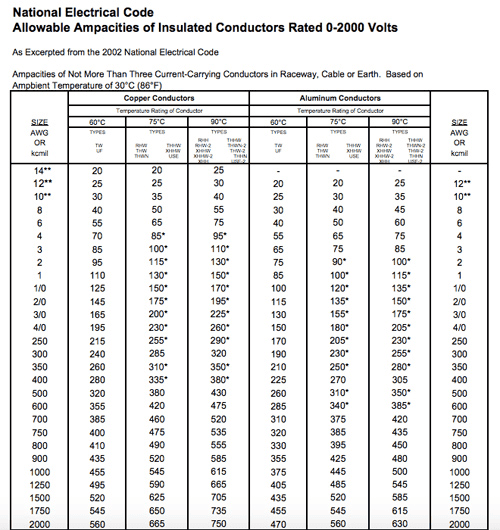
Also, remember that you may only need to refer to a column saying that the wire has been rated 140℉ (60℃). This is because the code enforces that equipment under 100 amps should be used at the minimum temperature rating of the wire.
As a result of the chart, you can see that a typical 55 or 50-amp breaker wire size is 6 gauge. Using the same chart, you can also calculate different wire ratings, such as 60 amp, by considering the next size that does not exceed the stated rating.
However, aside from checking the NEC chart, there are also factors you may consider, as it may change the recommended wire size depending on your application.
For additional information, here are the factors that may affect the recommended wire size.
Other Factors to Consider
1. Length of Wire
Longer wire requirements typically increase resistance and a higher voltage drop. Every additional 100 feet may experience a 20% voltage drop. As a result, the circuit may have insufficient energy to energize the equipment, causing it to malfunction or get damaged.
In this case, the wire size for 50a breakers will change depending on how long the wire is.
For example, you need 200 feet of wire for a 50-amp circuit. You’ll first need to get its standard amp rating by dividing the circuit rating by the 80% safe operating rating. So, the 50 amp circuit divided by 80% is 62.5 amps.
As mentioned, you’ll need a 6-gauge wire for a 50-amp breaker. However, as the wire is 200 feet long, you’ll need to multiply the gauge by 40% voltage drop, so 6 x 40% equal 2.4. Continue to multiply this result by 62.5A, and you’ll learn the actual amp rating is 150A.
Based on the total amp rating calculated above, look at the NEC chart and determine the correct gauge size. This leads us to learn that the best gauge size for a 200-foot wire with a 50 amp circuit is 3/0 AWG.
Furthermore, consider the heat dissipation of the wire inside its enclosure, such as conduit, as it can affect the capacity of the wire. Typically, multiple current conductors inside an enclosure generate more heat but should not exceed a temperature of 30°C.
2. Types of Conductor Used in Wire
Another thing to consider is the conductor used in the wire. Generally, copper and aluminum are the wires’ primary conductors for circuit installation. Though they are both effective conductors, they differ in terms of efficiency.
Aluminum wire is less expensive and much lighter than copper wire. However, in terms of the current capacity rating and resistance, copper is superior to aluminum. This also means that the equivalent of aluminum wire size is a much bigger size than regular wire size copper.
Therefore, if your wire material is aluminum or copper-clad aluminum, a 4-gauge conductor size will do.
FAQs
How Far Can You Run a 50 Amp Wire?
Due to the percentage of voltage loss, you can only utilize a 6 gauge wire 50 amp for a distance of fewer than 100 ft.
Remember that the voltage drop rating increases by 20% for every 100 ft of cable length. In this instance, you may want a larger wire with a higher rating for every 100 ft length.
Can 6 or 8 Gauge Wire Handle 50 Amps?
As stated above, the recommended wire for 50 amps 240 volts is a 6 gauge wire. This circuit is primarily used for high-power appliances such as large ovens and electric dryers.
Even though an 8 gauge wire can hold a 50 amp current rating, it may overheat. I’d suggest using an 8-gauge wire for a 40 amp 240 volt circuit.
Related:
Can I Put a 50 Amp Breaker in a 100 Amp Panel?
To determine whether you can add a 50 amp 220V circuit into a 100 amp panel, you should first know your total loads.
In this case, you might need to calculate the total amperage of all the devices you use in your house. Also, consider that you should not exceed more than 80% of the total loads of the panel rating.
This way, you will know if you can still add the said rating of a circuit. If your panel can no longer add another 50 amp circuit, you can upgrade your panel box to a much higher one.
What Wire Size Do I Need for a 30 amp 220V Circuit?
For a 30 amp circuit, you can use the recommended size of 10 gauge wire. This wire size allows you to install a circuit for a 150 feet maximum length.
However, it is also safer to use a 30 amp breaker wire size of 8-gauge, especially in the much longer application. In most cases, even in shorter circuit distances, many licensed electricians recommend this setup for a much safer circuit.
Conclusion
Proper wire and breaker sizing is necessary for a safe circuit installation. Always remember that using a larger wire size won’t cause any problems except costing a little higher. However, using thinner wire sizes is extremely risky and can result in substantial property damage.
The above information will help you determine what size wire do I need for a 50 amp breaker. However, if you are still unsure about 50 amp wire size, you can consult an expert for guidance on suitable wire sizing.

I am Edwin Jones, in charge of designing content for Galvinpower. I aspire to use my experiences in marketing to create reliable and necessary information to help our readers. It has been fun to work with Andrew and apply his incredible knowledge to our content.

